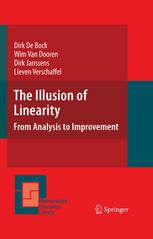

Most ebook files are in PDF format, so you can easily read them using various software such as Foxit Reader or directly on the Google Chrome browser.
Some ebook files are released by publishers in other formats such as .awz, .mobi, .epub, .fb2, etc. You may need to install specific software to read these formats on mobile/PC, such as Calibre.
Please read the tutorial at this link: https://ebookbell.com/faq
We offer FREE conversion to the popular formats you request; however, this may take some time. Therefore, right after payment, please email us, and we will try to provide the service as quickly as possible.
For some exceptional file formats or broken links (if any), please refrain from opening any disputes. Instead, email us first, and we will try to assist within a maximum of 6 hours.
EbookBell Team

4.1
60 reviewsLinear or proportional relationships are a major topic in mathematics education. However, recent research has shown that secondary school students have a strong tendency to apply the linear model also in situations wherein it is not applicable. This overgeneralization of linearity is sometimes referred to as the "illusion of linearity" and has a strong negative impact on students’ reasoning and problem solving skills.
"The Illusion of Linearity: From Analysis to Improvement" presents the reader with a comprehensive overview of the major findings of the recent research on the illusion of linearity. Although the empirical study of students’ improper linear reasoning clearly constitutes a new line of research, it owes a great deal to prior work in mathematics education research community such as the work of the scholars of the Freudenthal Institute on realistic mathematics education.
Based on both quantitative and qualitative research, "The Illusion of Linearity: From Analysis to Improvement" discusses the following issues: (1) how the illusion of linearity appears in diverse domains of mathematics and science and how it is conceptually related to other more general misconceptions identified in the research literature, (2) what are the crucial psychological, mathematical, and educational factors being responsible for the occurrence and persistence of the phenomenon, and (3) how the illusion of linearity can be remedied by appropriate instruction.
"The Illusion of Linearity: From Analysis to Improvement" is essential to those working in mathematics education, particularly teacher educators and curriculum research and development.